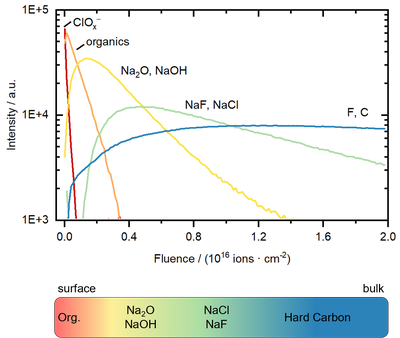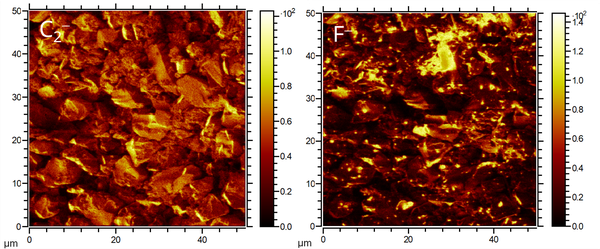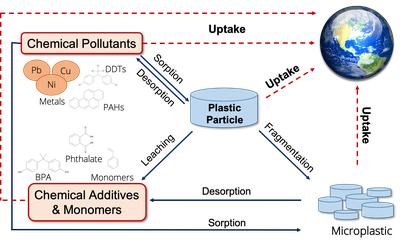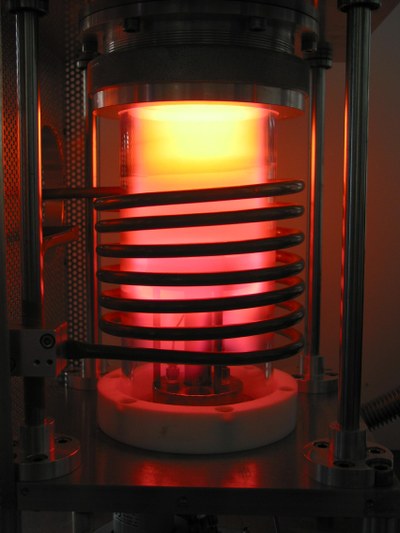SIMS, Plasmas & Materials
Welcome on the webpage of the SIMS, Plasmas and Materials group. On these webpages, you can find information about the direction, the area of research, the publications and the teaching. As a subgroup, we are part of the WG Janek. At first glance, “SIMS, Plasmas and Materials” appears to be a very diverse combination of topics. At second glance, an analytical technique like secondary ion mass spectrometry (SIMS) requires materials for analysis. Only specialist knowledge in the field of analytics and materials science enables maximum outcomes. The main interest lies in the investigation of diffusion processes in applied materials systems. This ranges from drug release from biomaterials and transport into bone, via diffusion in environmental polymers through materials degradation in low-temperature plasmas. A particular challenge lies in SIMS in-situ investigations of electrochemical systems, like solid oxide fuel cell electrodes and batteries.
- Batteries
-
Within the POLIS Cluster of Excellence we are investigating the formation, stability and interfacial kinetics of the SEI (Solid Electrolyte Interface) layer on hard carbon anodes in Na batteries. The investigations are carried out in an electrochemical cell with a Na cathode and most commonly used organic electrolytes, such as cyclic propylene carbonate (PC) and ethylene carbonate (EC). The SEI characterisation is carried out by XPS and ToF-SIMS in combination with statistical data analysis methodes like Multiple Curve Resolution (MCR). A stable SEI is a prerequisite for a long term cycle stability of the battery and its transport properties can determine the cellular kinetics. In the Figure 1 an exemplary SIMS depth profile MCR analysis of the SEI layer on an hard carbon electrode is shown. It shows a layered structure with different organic and inorganic layers. Figure 2 shows mass images of the lateral distribution of the C 2 - as well as F - mass fragments. The C 2 - image visualizes the hard carbon structure. The F- is an SEI component, which is inhomogeneously distributed at the SEI surface.



Left: 5 factor MCR-Analysis of a ToF-SIMS depth profile of the SEI on a Hard Carbon electrode from a sodium-ion battery. bottom: graphical depiction of the results above. Right: Mass images that show C 2 - as well as F - distribution at the SEI surface. The C 2 - image reveals the struture of the hard carbon electrode.
- Pollutant diffusion in polymers
-
Due to intensive use of plastic in many areas of our life, it often ends up in the environment mainly through insufficient garbage collection in emerging and developing countries. Here, larger plastic parts degrade over time to so-called micro- and later nanoplastics. These plastic particles can sorb other released pollutants and get into the food chains of higher living beings through ingestion by organisms. In addition, plastics can release environmentally harmful fillers over time. In particular, the uptake of environmental toxins by plastics has so far not been adequately investigated from the point of view of the applicants, since the majority of the studies assume that the pollutants cannot penetrate the solid volume of the plastic particles and are only adsorbed on the particle surface. As could be shown in preliminary work, the transport into the particle (absorption) has a not negligible share when considering the total storage capacity.


Left: Scheme, which shows the interaction of chemical pollutants with plastics. Right: Absorption experiment of hexachlorobenezene (HCP) by nylon. The nylon sample was analyzed by SIMS depth profiling. 2D- and 3D-plot of HCB distribution within the analysed volume element of the polyurethane sample. The interface between the polymer and solution is at 0 nm and at the upper side of the depicted cube, respectively. In both cases the ion m/z 281.8 (C 6 Cl 6 - ) is plotted for HCB.
- Bioanalytics with TOF-SIMS
-
Secondary ion mass spectrometry (SIMS) is a classical method for inorganic materials analysis. Within the last two decades the application of this method is capturing the life sciences (organic and biological samples). In collaboration with the medical department we use the method for systematic investigations of bone, bone cells and the bone/implant interface.

For the analysis two SIMS machines are available:
1) ToF-SIMS 5-100 (IonTOF Company, Münster, Germany). The machine is equipped with a 25 keV Bi-Cluster Primary ion gun, 2 keV Cs and O 2 gun for sputtering, 20 keV Ga gun for FIB and a 20 keV Ar-Cluster gun for sputtering and analysis.
2) Hybrid SIMS M6 (IonTOF Company, Münster, Germany). The machine is equipped with a 30 keV Bi-Cluster nano probe, 2 keV Cs and O 2 gun for sputtering, 20 keV GCIB, which can be operated with Ar and O 2 , for sputtering and analysis. The speciality of the machine is a Orbitrap detector (Q exactive HF, Thermofischer), which allows a mass resolution of up to m /Δ m = 480.000.
Both machines are equipped with a cryo stage and the Leica transfer system VCT500 with cooling option.
- Plasma electrochemistry
-
Low pressure discharges (plasmas) consist of free charge carriers and show ionic conductivity. Therefore they can regarded and used as a kind of gaseous electrolyte. Actually we are using inductively and capacitively coupled RF discharges. One setup is adapted for plasma polymer coating of battery materials. The second plasma chamber is used for the investigation of materials degradation in low temperature oxygen plasmas.

Figure: Low temperature discharge.
Inductively coupled RF discharge with air.
